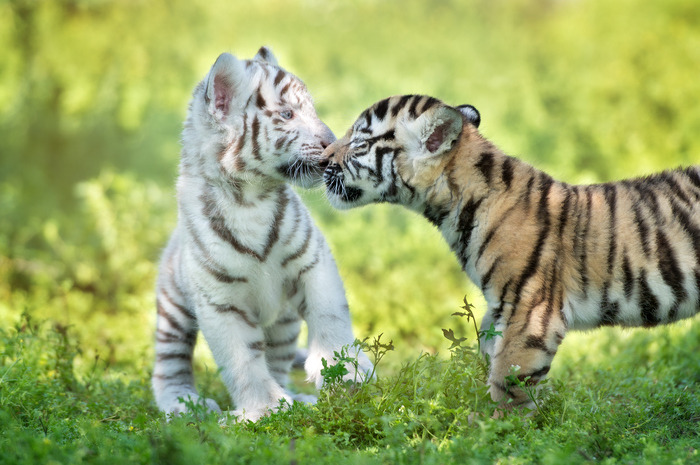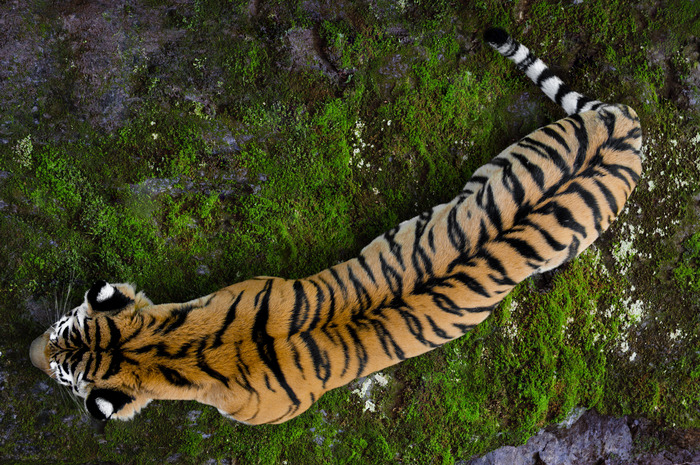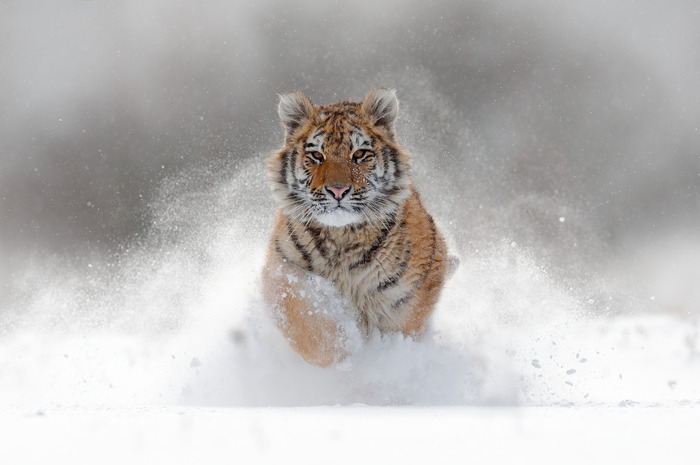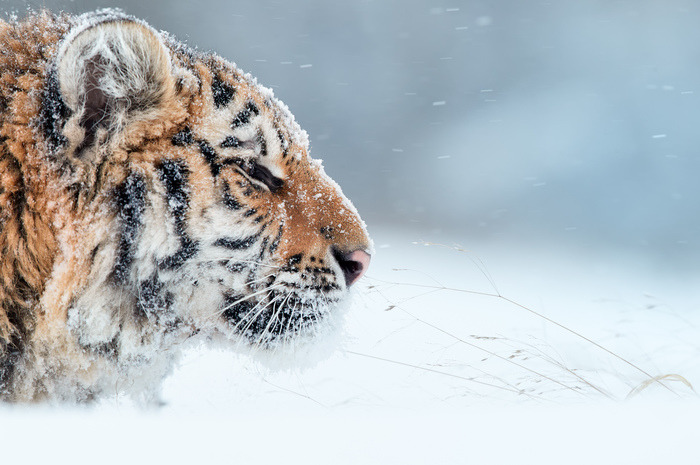30 Captivating Photos Of Tigers
This beautiful, elusive animal is the largest cat species. It's hard to mistaken them – tigers are known for their thick reddish coats with white bellies and white and black tails. Their stripes are special to each individual, and the tails keep them balanced. You also won't mistake the mighty (and even rarer) white tiger. It is variant of the Bengal tiger, which is found in the wild in several Indian states. Some tigers live where it gets very cold—in India and parts of Southeast Asia.
After a century of decline, tiger numbers are on the rise.
At least 3,890 tigers remain in the wild, but much more work is needed to protect this species that's still vulnerable to extinction, according to World Wildlife Fund.
Tigers have been overhunted for their fur and body parts that people use in traditional medicines.
Tigers' habitat has also dwindled seriously as humans have developed land for uses such as farming and logging, according to National Geographic.
Tigers' lifespan is about 20-26 years.
There were once nine subspecies of tigers: Bengal, Siberian, Indochinese, South Chinese, Sumatran, Malayan, Caspian, Javan and Bali.
Caspian, Javan and Bali are extinct; one is extinct in the wild, and the rest are endangered.
Tigers hunt alone, and generally search for food alone at night.
Fossil remains of tigers found in parts of China are believed to be 2 million years old.
Tigers live in many habitats – from tropical forests, woodlands and mangrove swamps to grasslands, savannah and rocky country.
Due to hunting, today tigers' range has been reduced to around 7 percent of its former size.
Tigers use their body weight to knock prey to the ground.
They kill their prey with a bite to the neck.
Every tiger in the world is unique – no two tigers have the same pattern of stripes.
Tiger cubs drink their mother's milk to survive after they are born.
Tigers are carnivores, which means they eat meat. Their diet is almost exclusively of meat.
Rarely, even though it happens, tigers will eat fruits, berries and grasses as a way to help digestion.
Tigers average one kill every eight or nine days.
Baby tigers, called cubs, follow their mother out of the den at around 8 weeks.
Tigers are very fast animals; they can reach up to 65km/h (40 miles per hour).
Tigers are perfectly equipped to live in the cold.
There are only about 400 Amur tigers in the wild, almost exclusively in the Russian Far East, where winters are brutally cold.
When hunting, tigers first hide in bushes. When they are close to their prey, they lunge out in an mighty display of power and agility.
They are good swimmers and often cool off in pools or streams.
Africa, Europe and America are not the natural habitats for tigers.
But they survive in captivity, even though they'd much prefer to roam vast plains and jungles.
The most immediate threat to the survival of the Amur tiger is poaching to supply demand for tiger parts on the black market, according to WWF.
Amur tigers have the largest home range of any tiger subspecies because they have to look for food in huge areas with to low prey densities.
Cubs become independent at around 18 months of age.
A tiger's roar can be heard as far as two miles away.






























